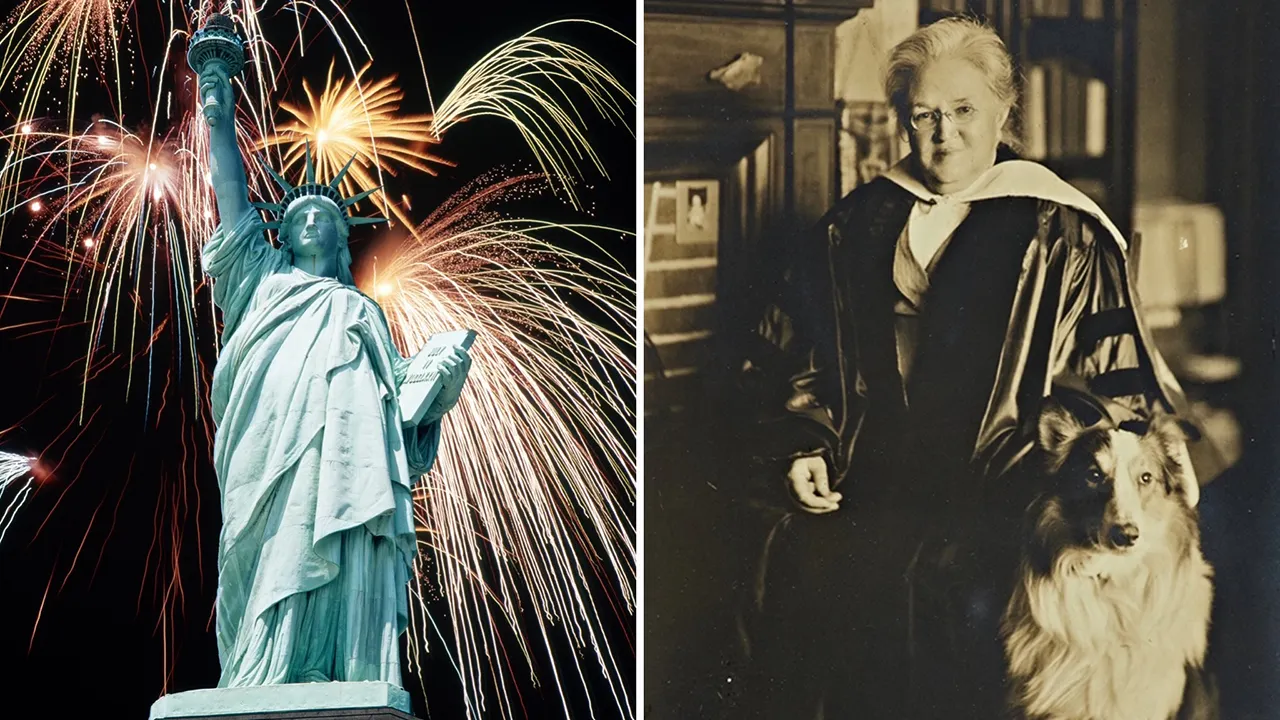Patriotic poet Katharine Lee Bates was born and raised on the picturesque Cape Cod, a narrow and serene stretch of sandy shoreline adorned solely by shifting dunes. However, it was a trip across the vast continent to Colorado that truly awakened her creative spirit. In the summer of 1893, Bates, a professor at Wellesley College in Massachusetts, made her way to the imposing Rocky Mountains, which left her awe-struck by their eternal grandeur. It was here, atop Pike’s Peak, that she found herself overcome with inspiration, leading her to pen the timeless anthem “America the Beautiful.”
Bates’ words flowed effortlessly as she stood at the summit, 14,000 feet above sea level, taking in the breathtaking panorama. The opening lines of her ode to America echoed in her mind, expressing the beauty of the country: “O beautiful for spacious skies, for amber waves of grain, for purple mountain majesties above the fruited plain!”
Born on August 12, 1859, in Falmouth, Massachusetts, Bates left an indelible mark on the nation with her poetic masterpiece. Reflecting on her experience, she remarked: “It was then and there, as I was looking out over the sea-like expanse of the fertile country spreading away so far under those ample skies, that the opening lines of the hymn floated into my mind.” Those lines became the foundation of her poem, which she initially titled “Pike’s Peak.” It was published in “The Congregationalist,” a Boston-based Christian magazine, on July 4, 1895.
The power of Bates’ message quickly resonated with people from all corners of the country, prompting numerous efforts to set her words to music. In 1910, church composer Samuel Augustus Wardby of Newark, New Jersey, composed a melody to accompany her poem, giving birth to the beloved rendition we know today.
While “America the Beautiful” is celebrated for its poetic depiction of the nation’s natural beauty, it possesses a deeper spiritual significance. Bates herself referred to it as a hymn, as it emerged in an era when faith and unity were revered. In a divided nation, she sought to remind Americans of their shared identity and interconnectedness.
Bates’ upbringing in Falmouth, a close-knit community with a tradition of supporting one another, shaped her understanding of the importance of unity. The tragedy of the Civil War left an indelible mark on her, with the loss of 19 local men and the assassination of President Abraham Lincoln as defining moments of her childhood. Despite these hardships, Bates thrived as a young reader, immersing herself in the works of literary giants such as Louisa May Alcott, Sir Walter Scott, and Charles Dickens.
Wellesley College became a turning point in Bates’ life, where she not only received a first-class education but also forged connections with influential figures in the literary world. The support and encouragement of school founder Henry Durant propelled her towards a successful literary career. Through Durant’s guidance, Bates crossed paths with luminaries like Henry Wadsworth Longfellow and William Dean Howells. In her later years, she also played a mentoring role, nurturing the talent of a young poet named Robert Frost.
Bates’ personal life was marked by her close relationship with Katharine Coman, a fellow professor at Wellesley College. Together, they defied societal norms by living together in what was called a “Boston marriage,” a term used to describe committed same-sex relationships during that era.
The journey to Colorado in 1893 provided Bates with a profound source of inspiration and propelled her to create “America the Beautiful.” Her travels exposed her to the natural wonders and diverse landscapes of the nation, from the majestic Niagara Falls to the expansive agricultural fields and the bustling city of Chicago. These experiences reinforced her belief in the unity of the American people and the need to celebrate their collective beauty and strength.
Katharine Lee Bates left an enduring legacy with her heartfelt words, which continue to resonate with the American spirit today. Her hymn serves as a reminder that, despite our differences, we are one American family, bound together from sea to shining sea.
Denial of responsibility! VigourTimes is an automatic aggregator of Global media. In each content, the hyperlink to the primary source is specified. All trademarks belong to their rightful owners, and all materials to their authors. For any complaint, please reach us at – [email protected]. We will take necessary action within 24 hours.


